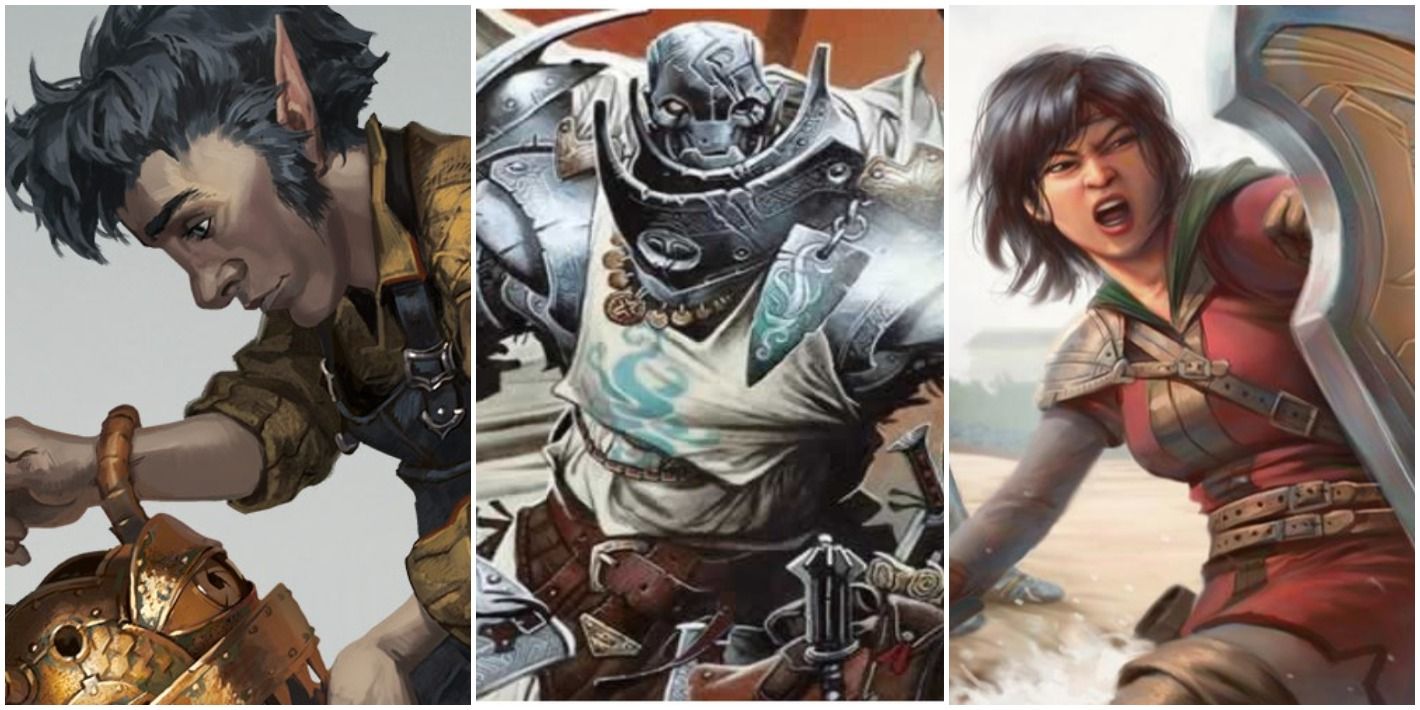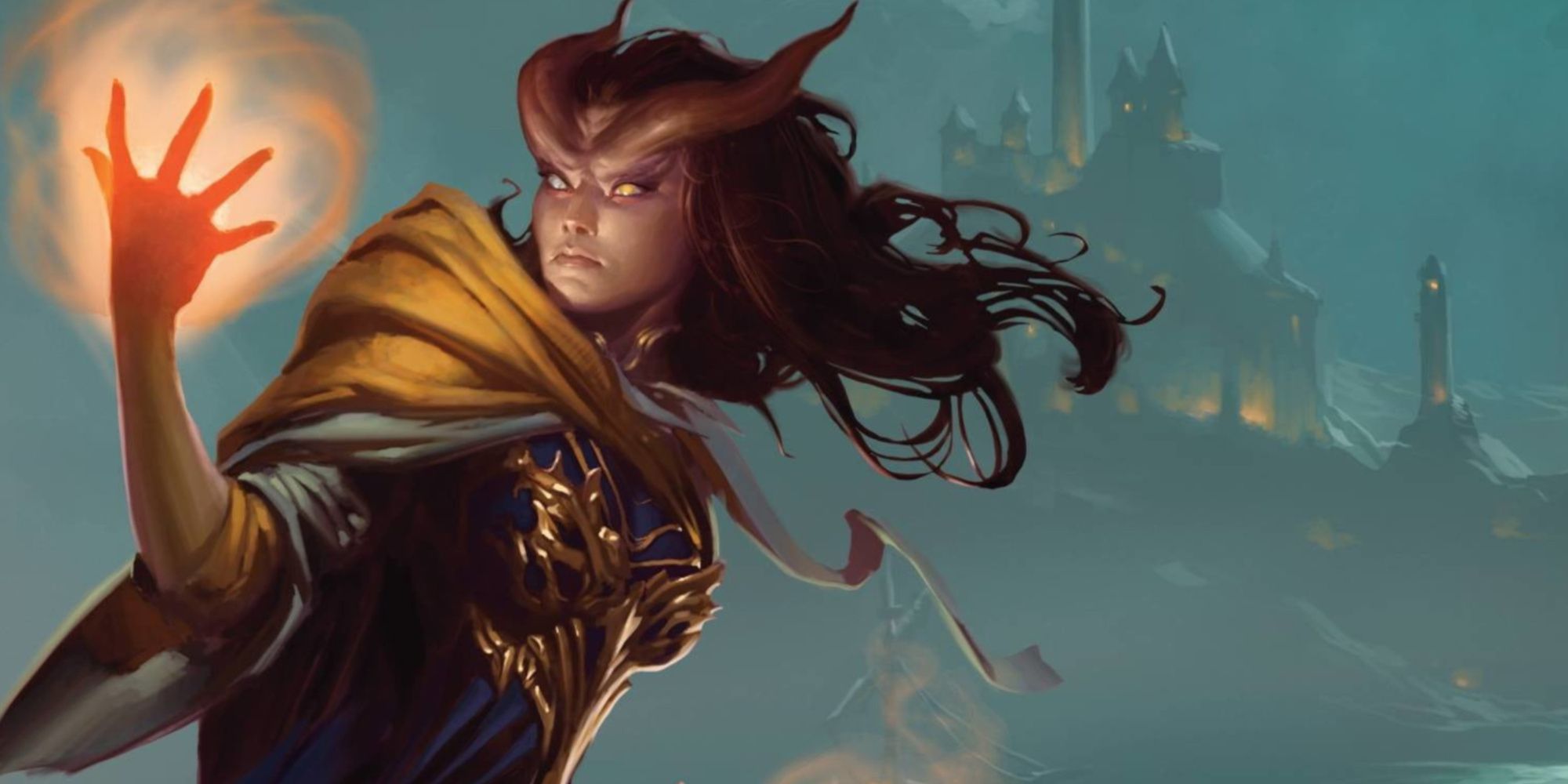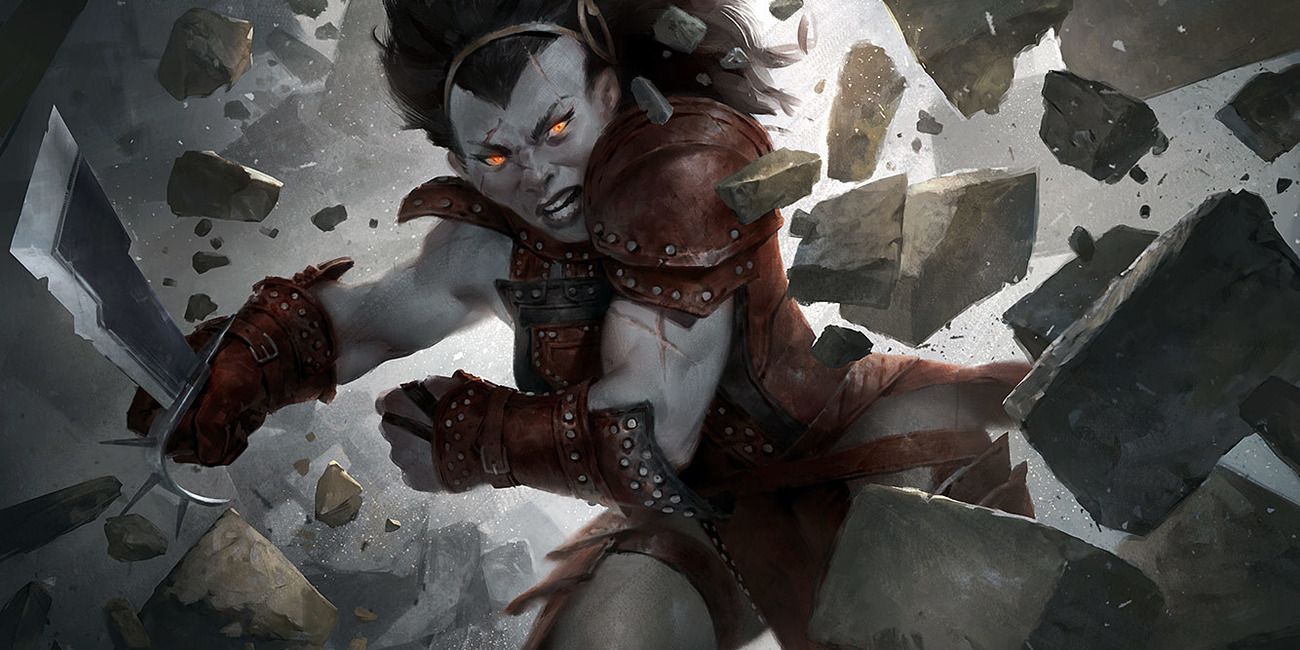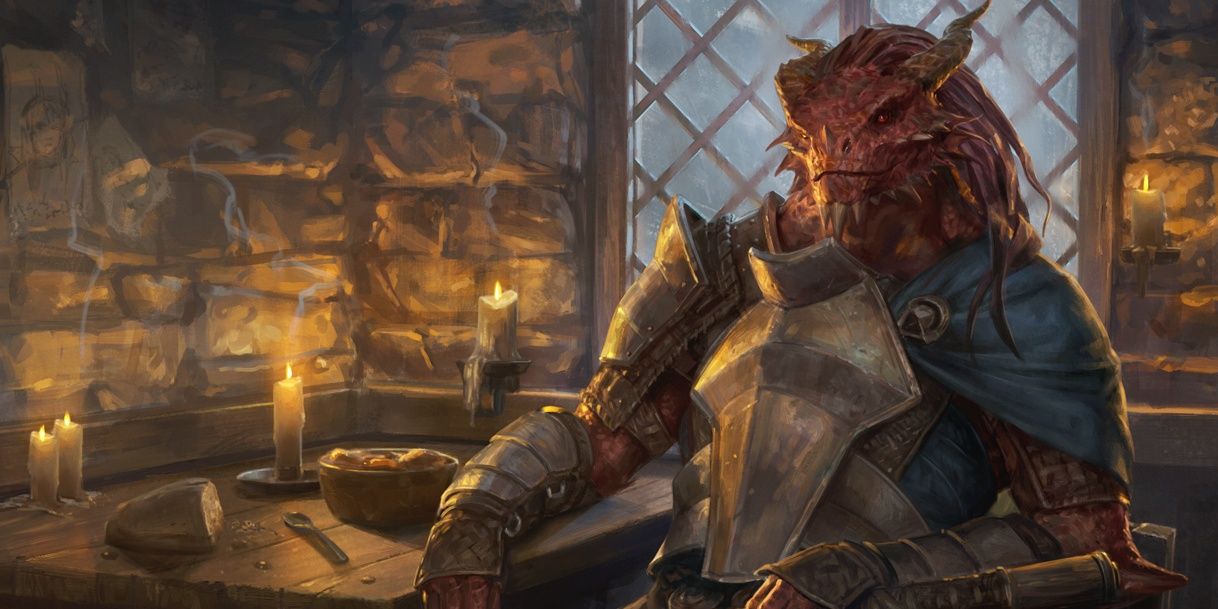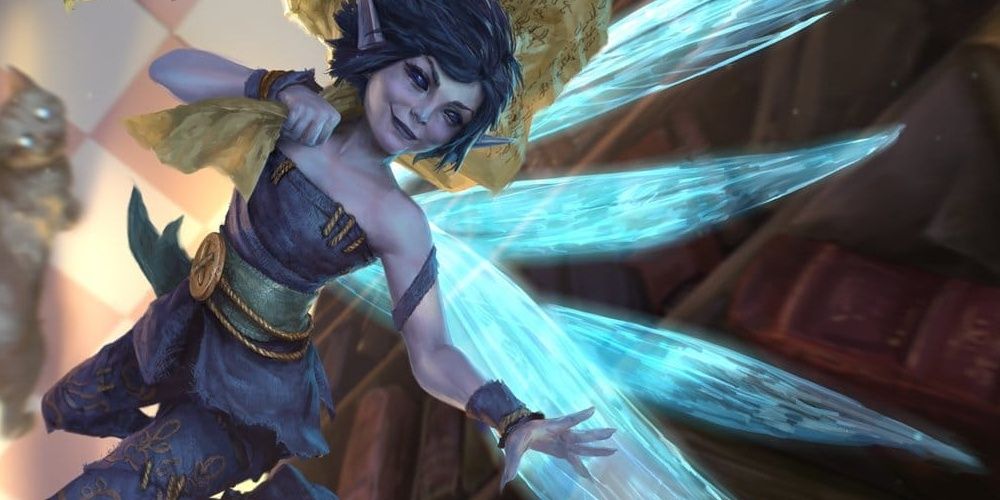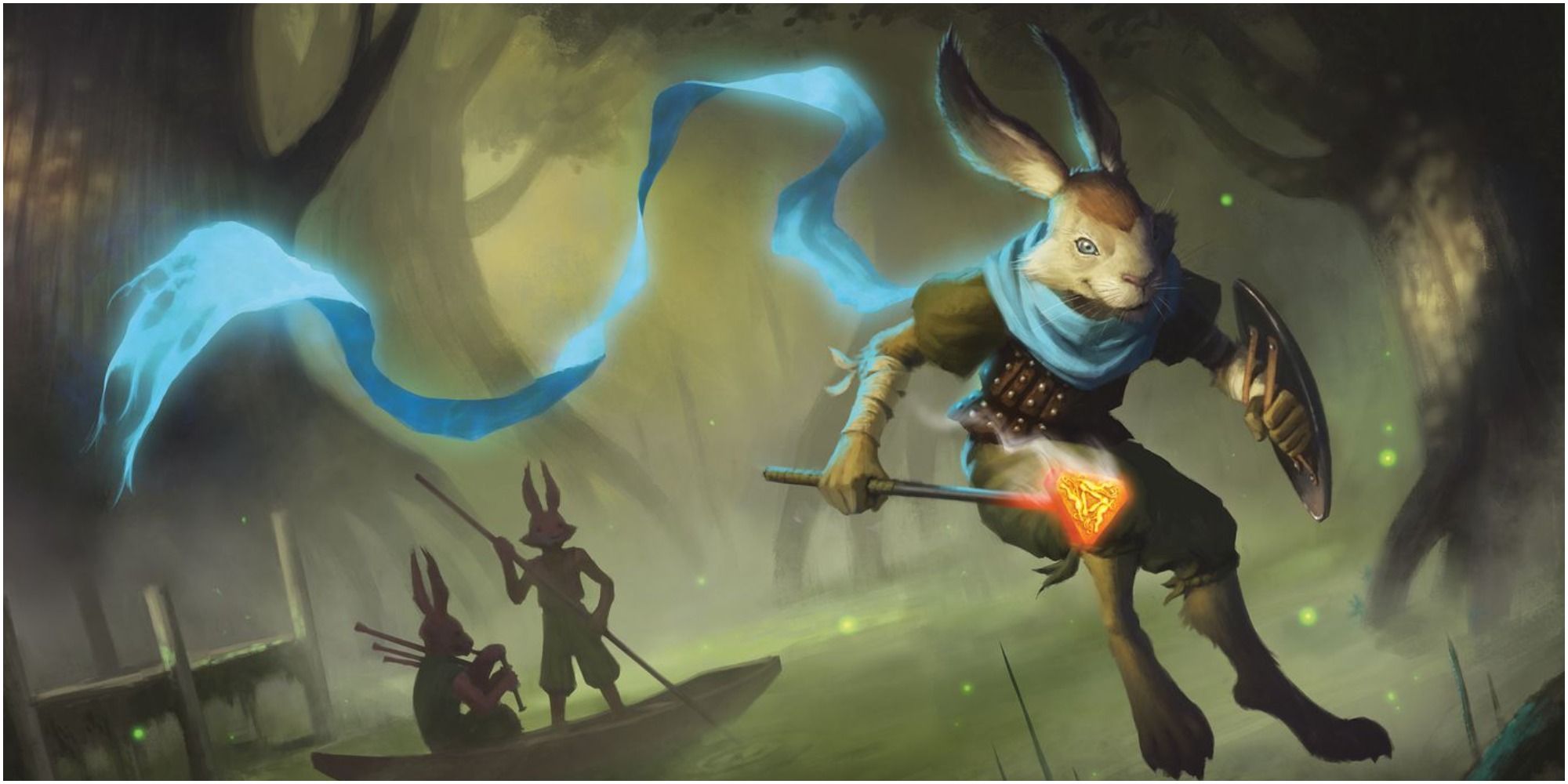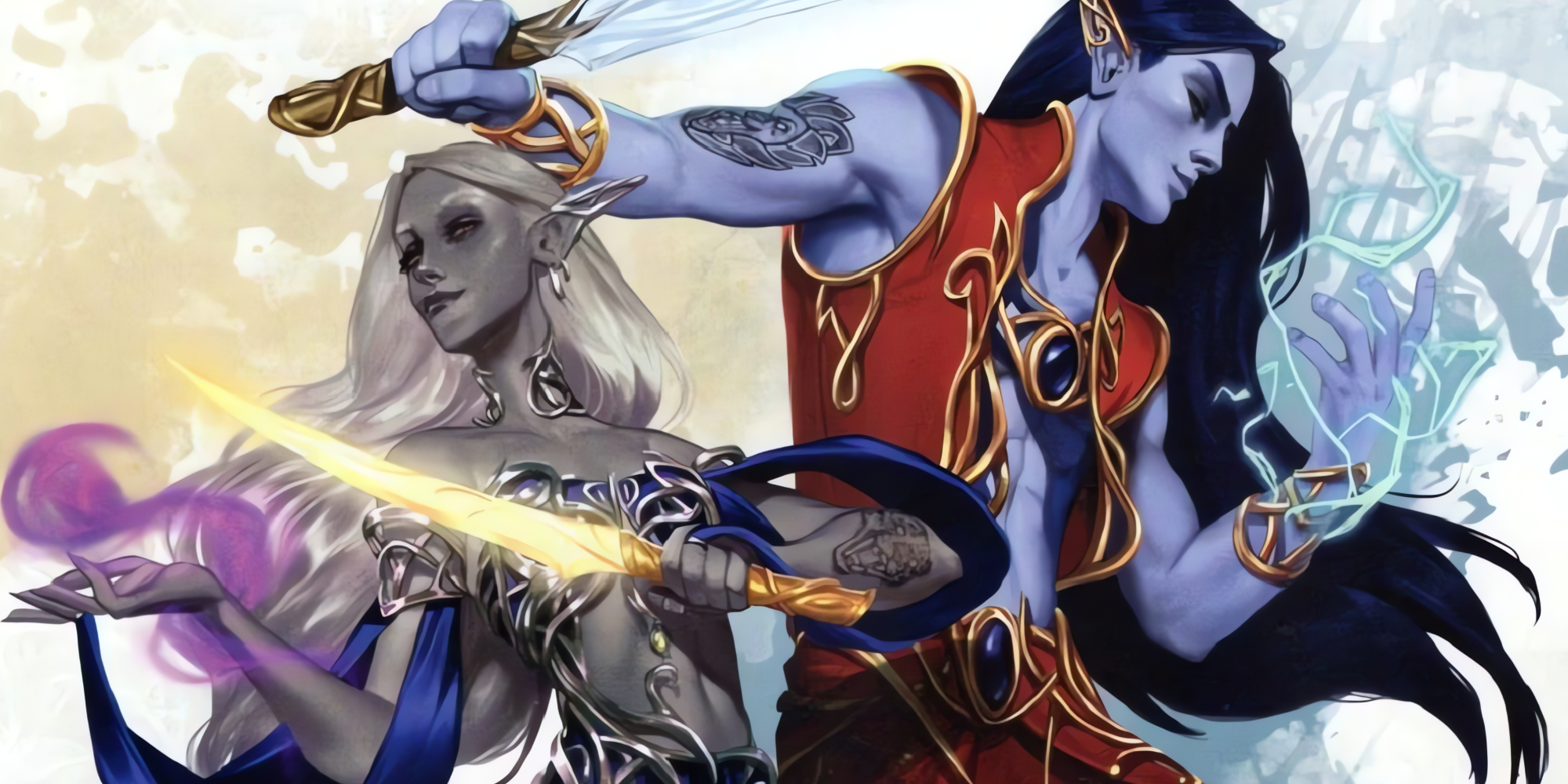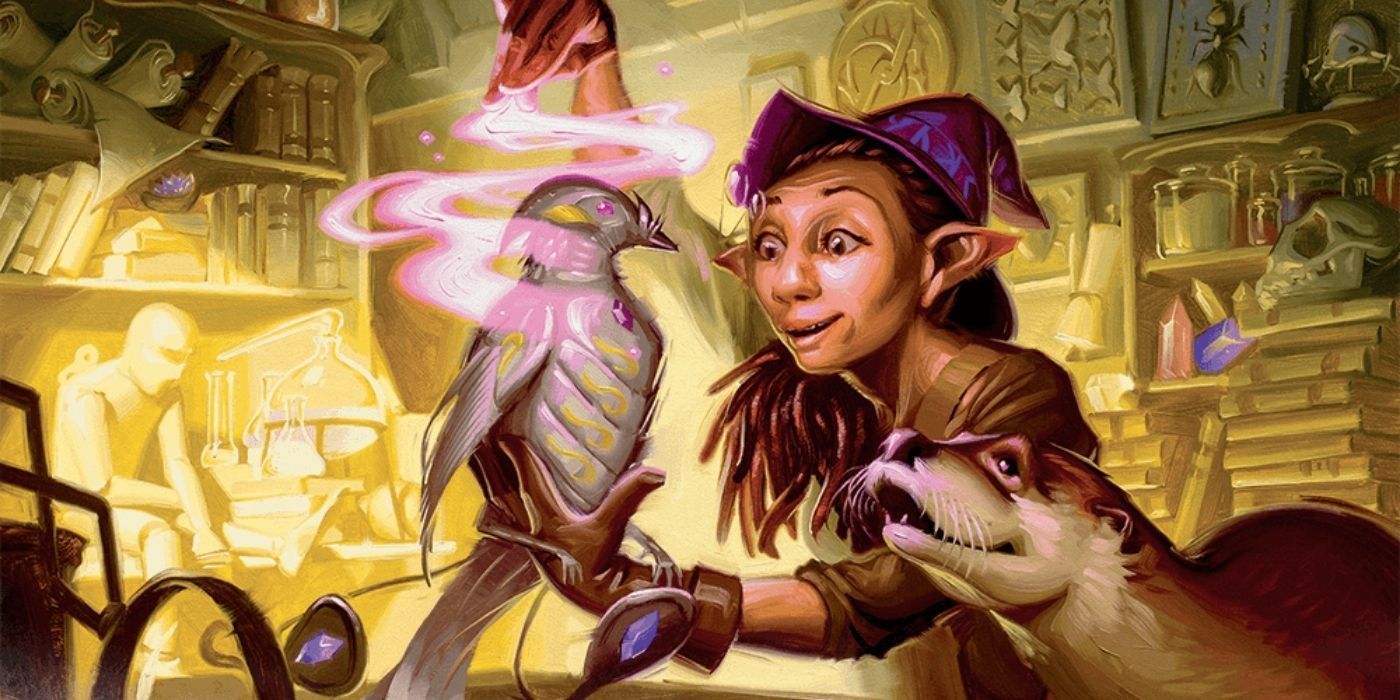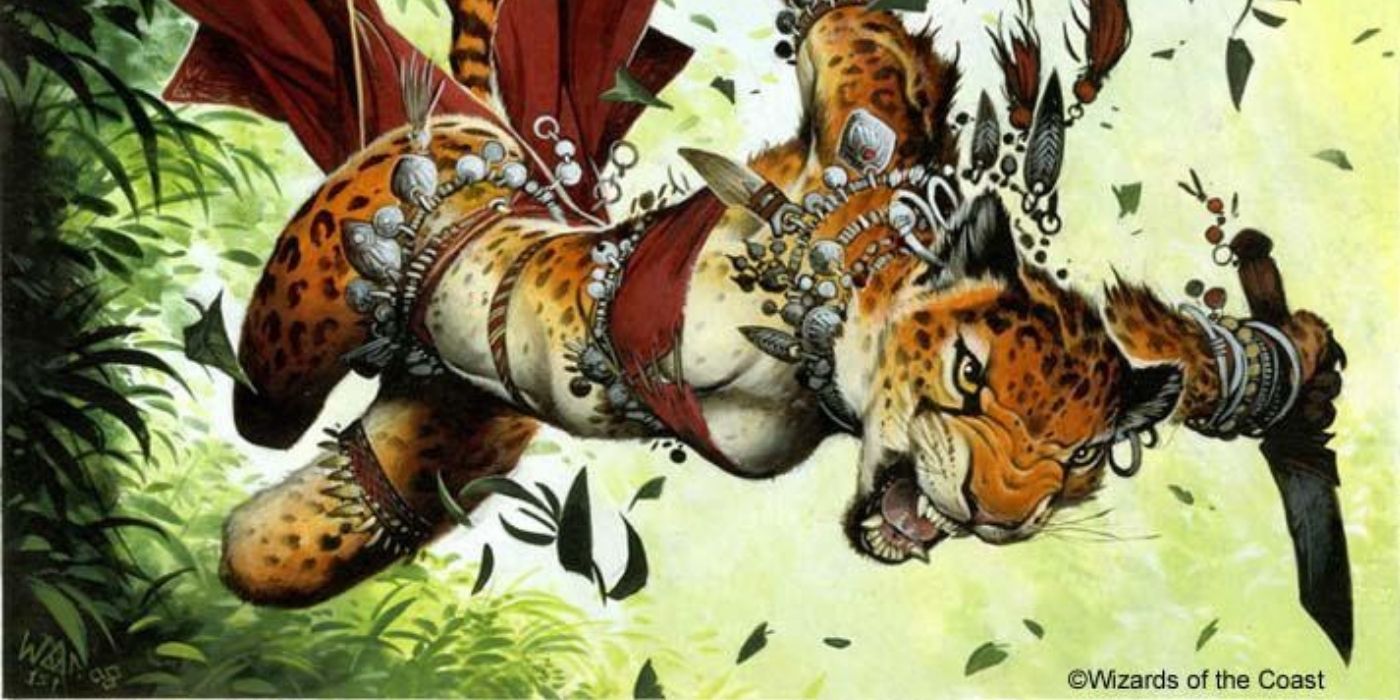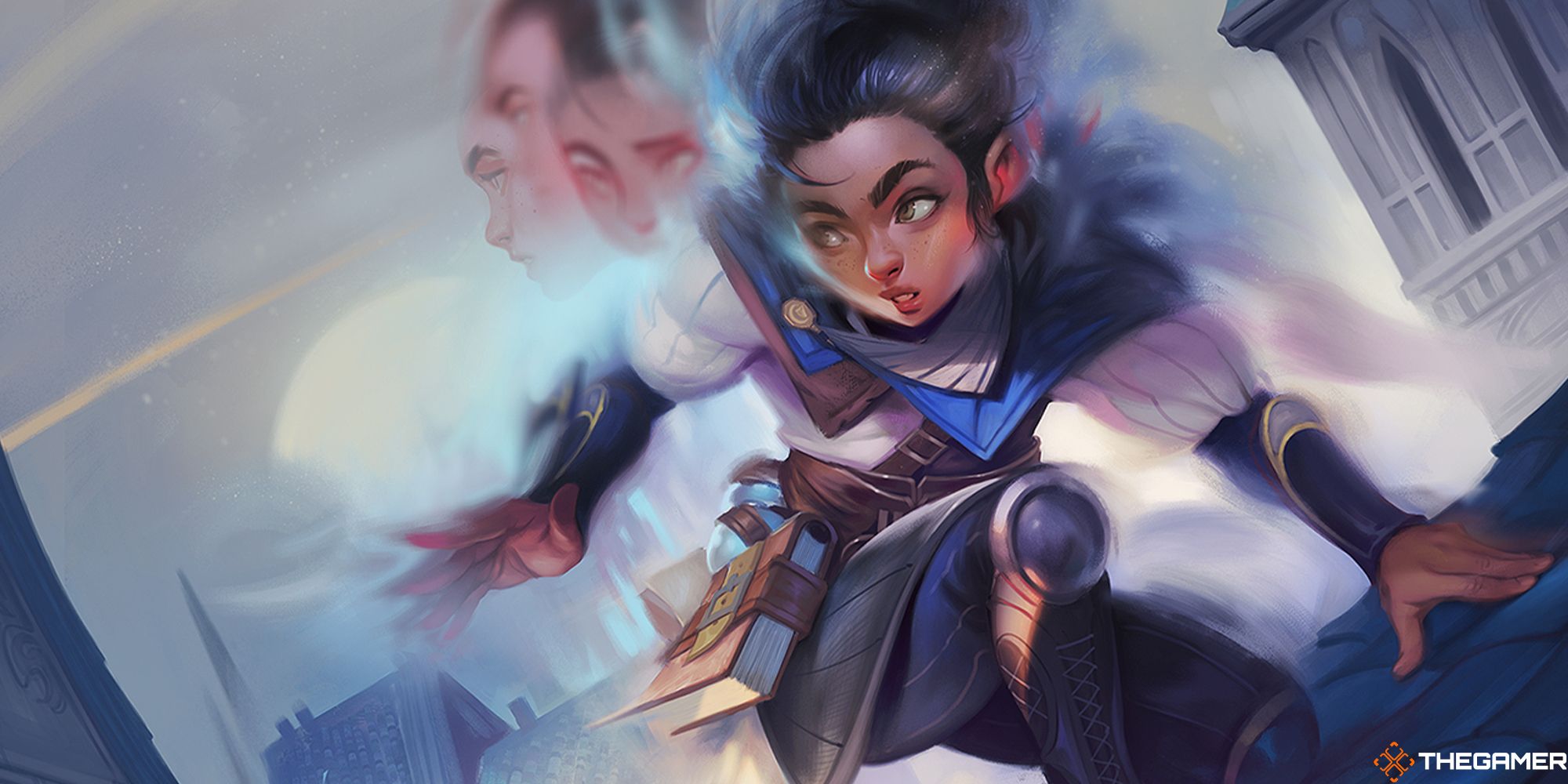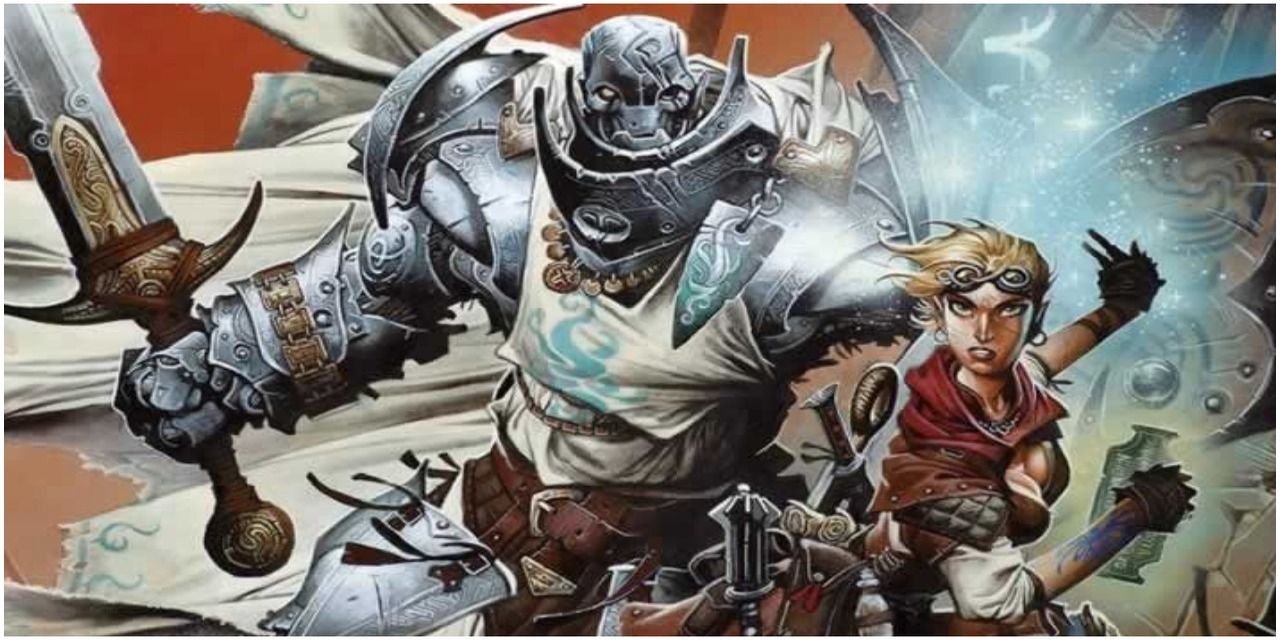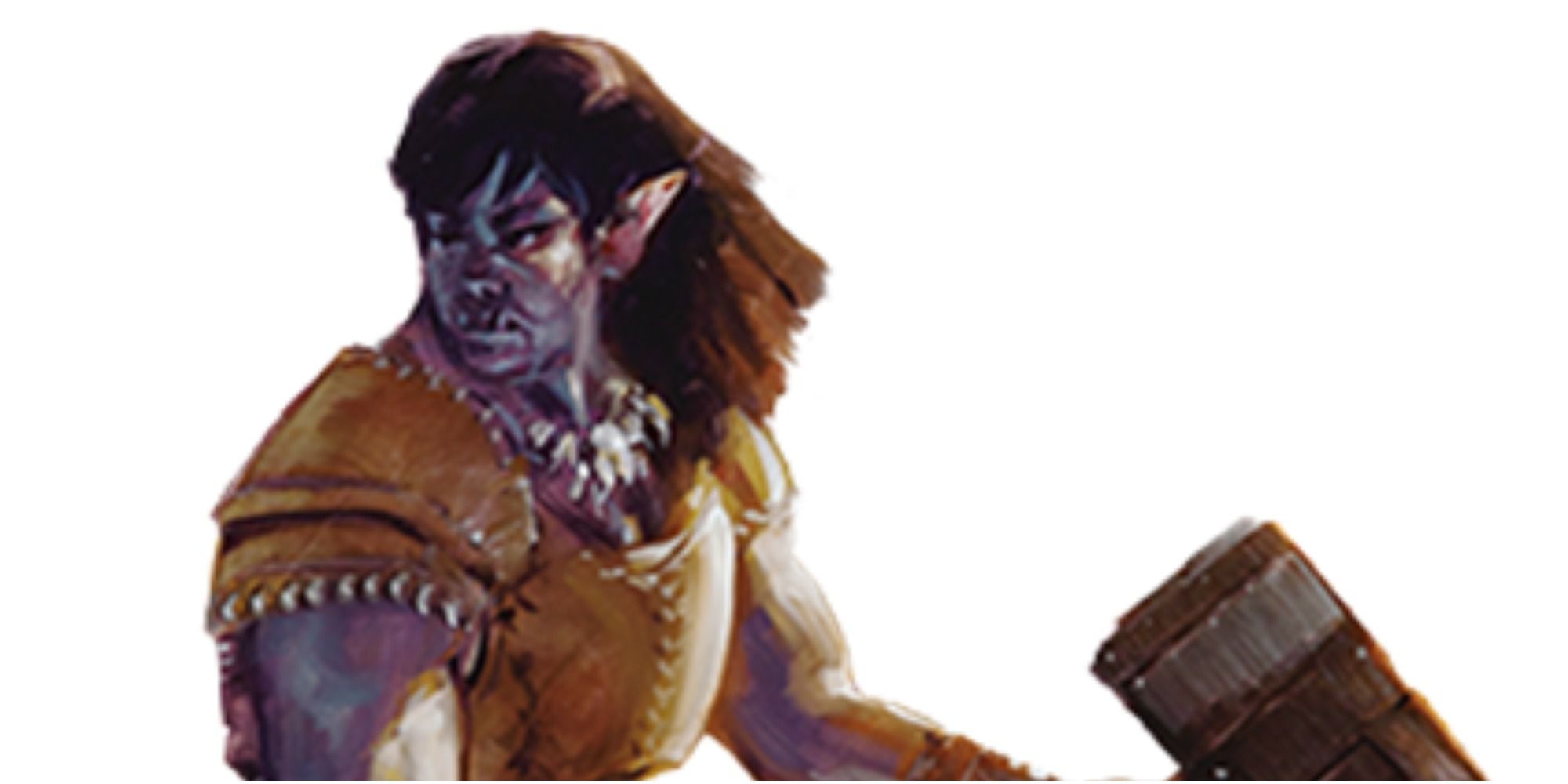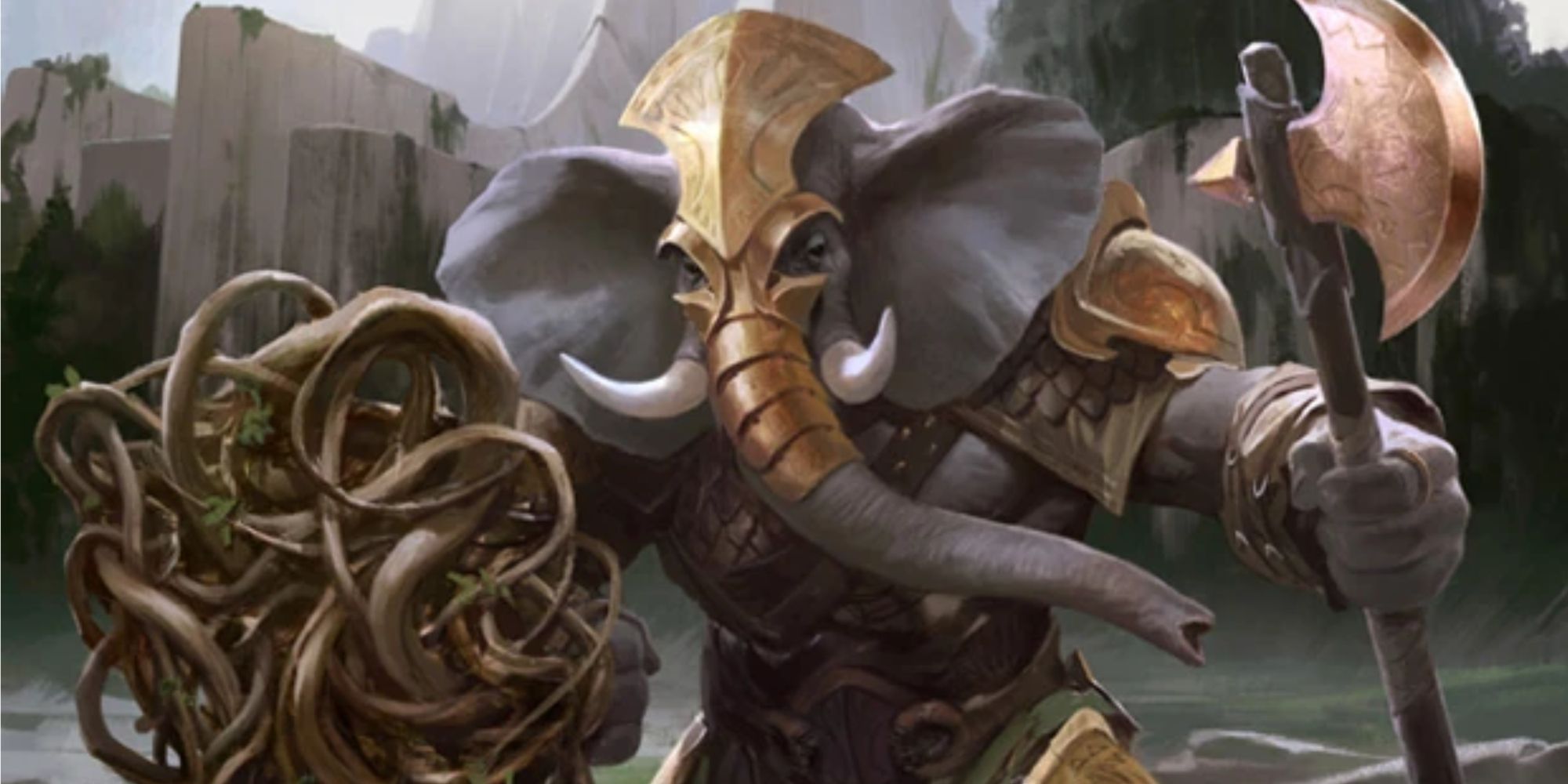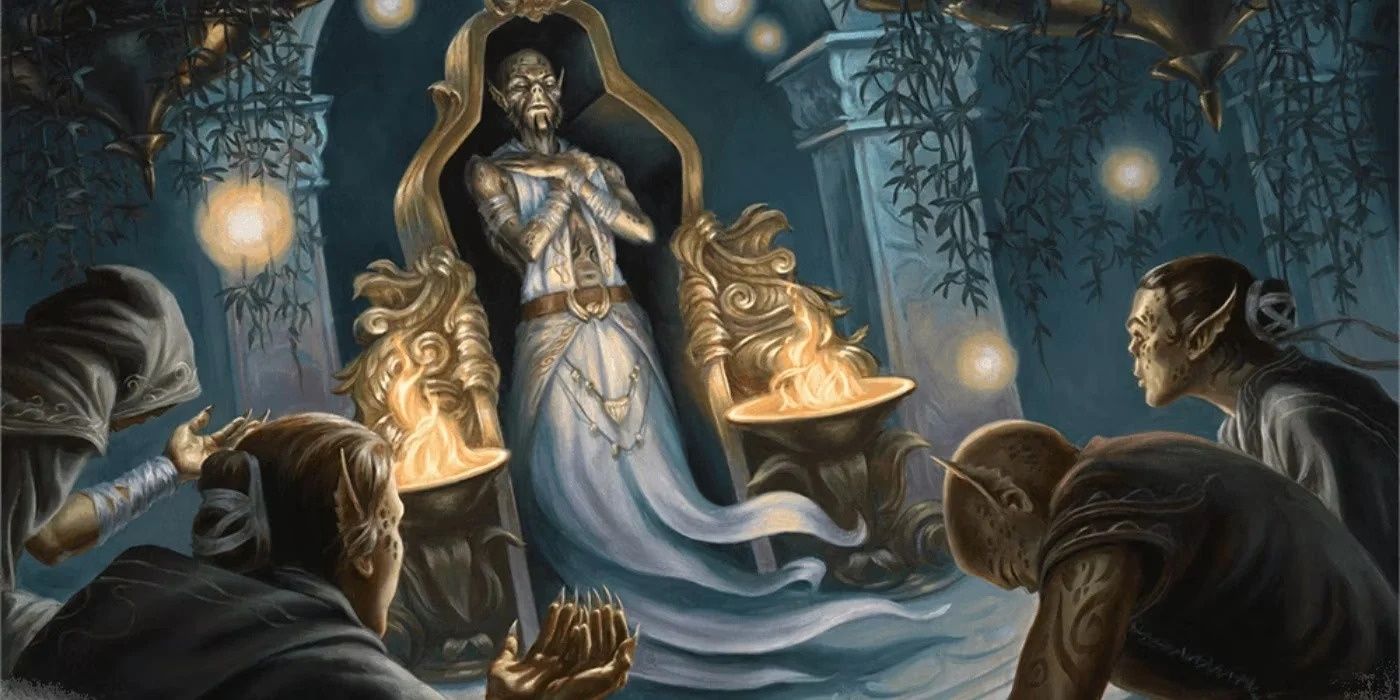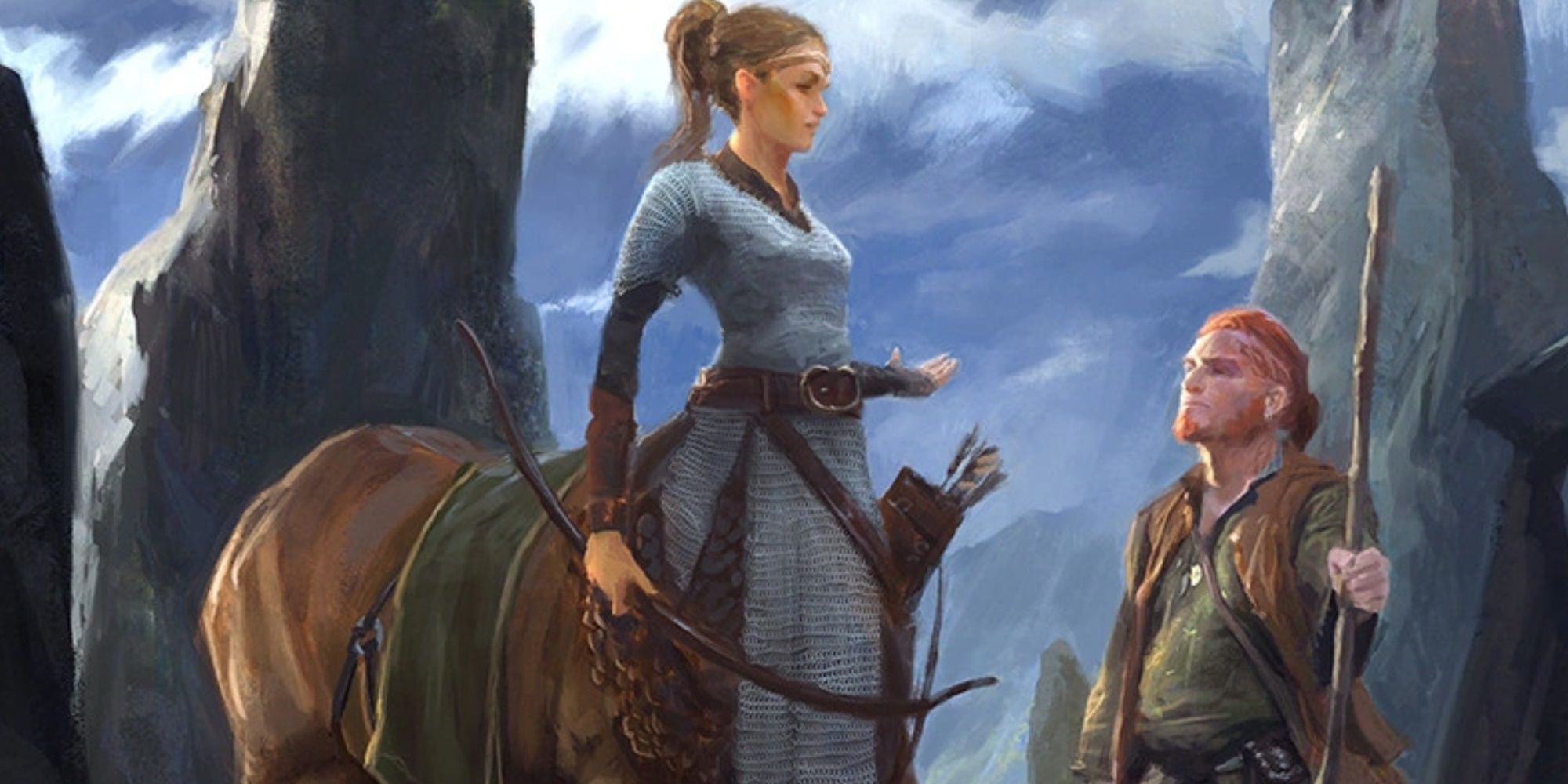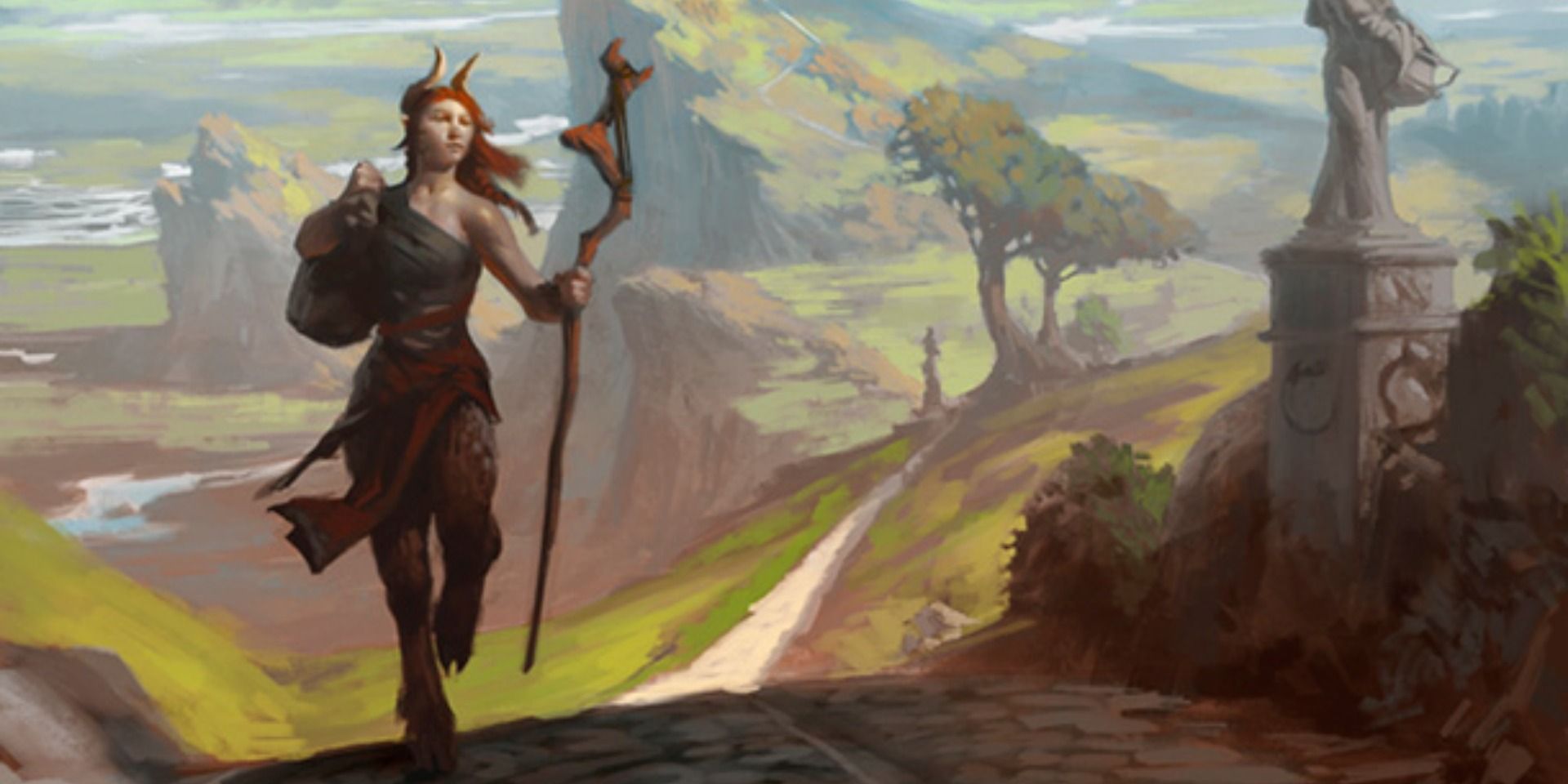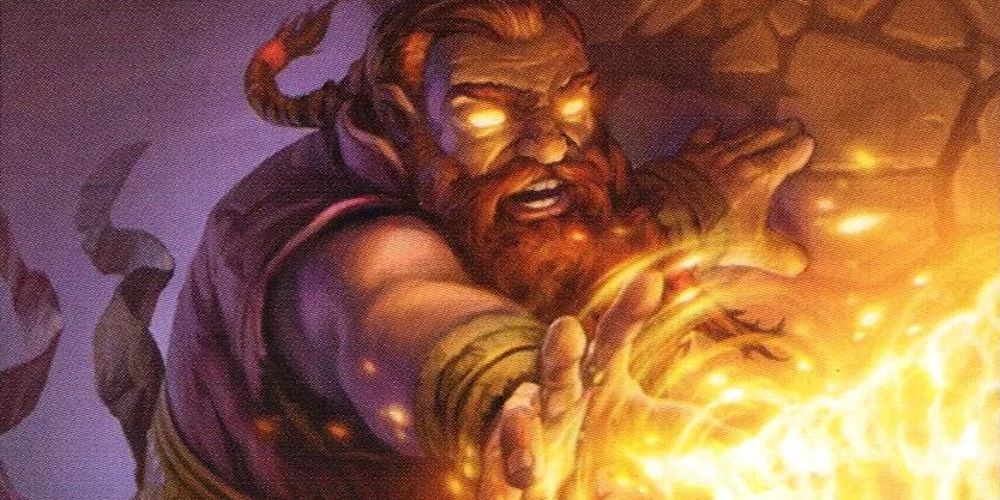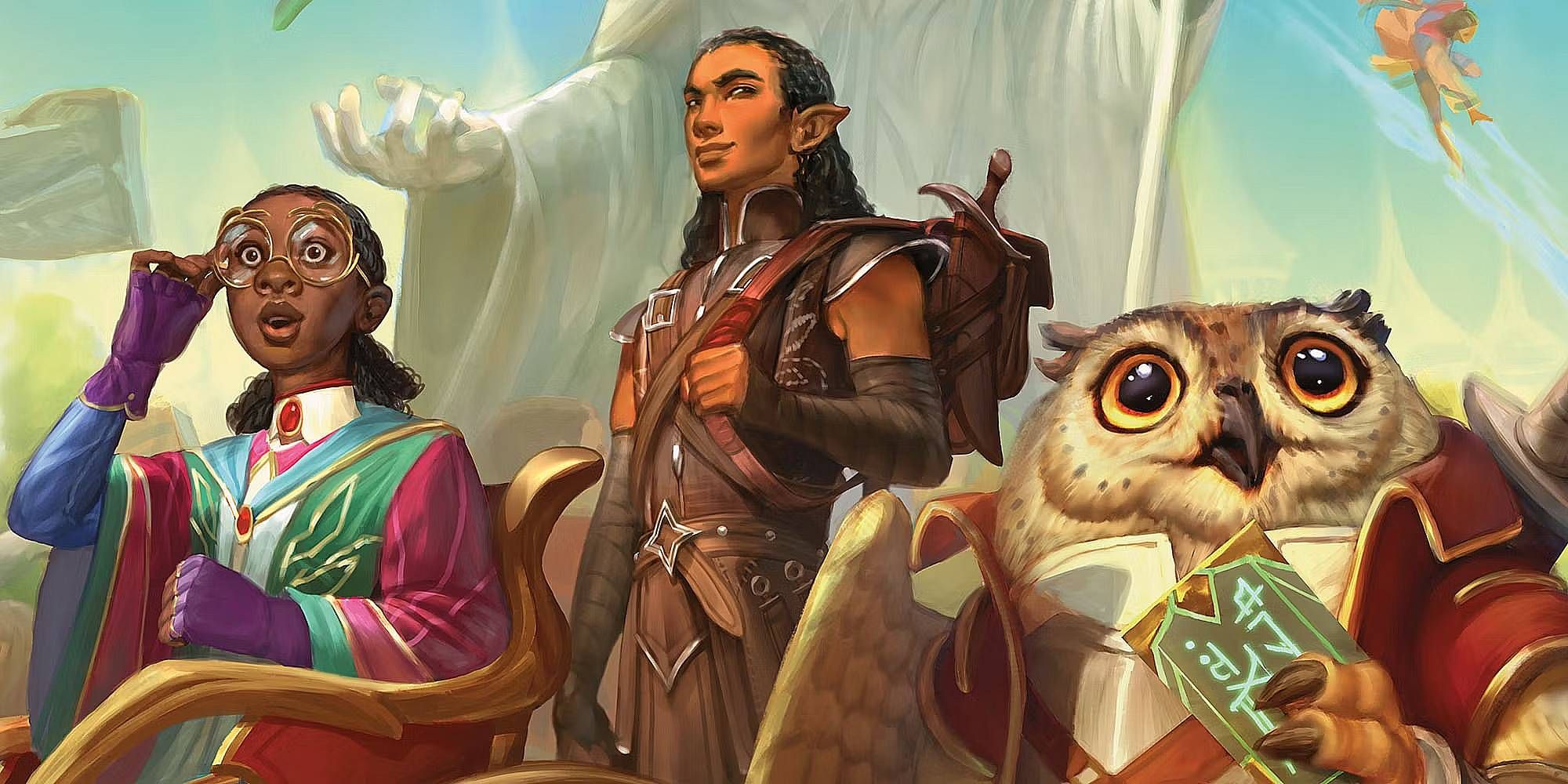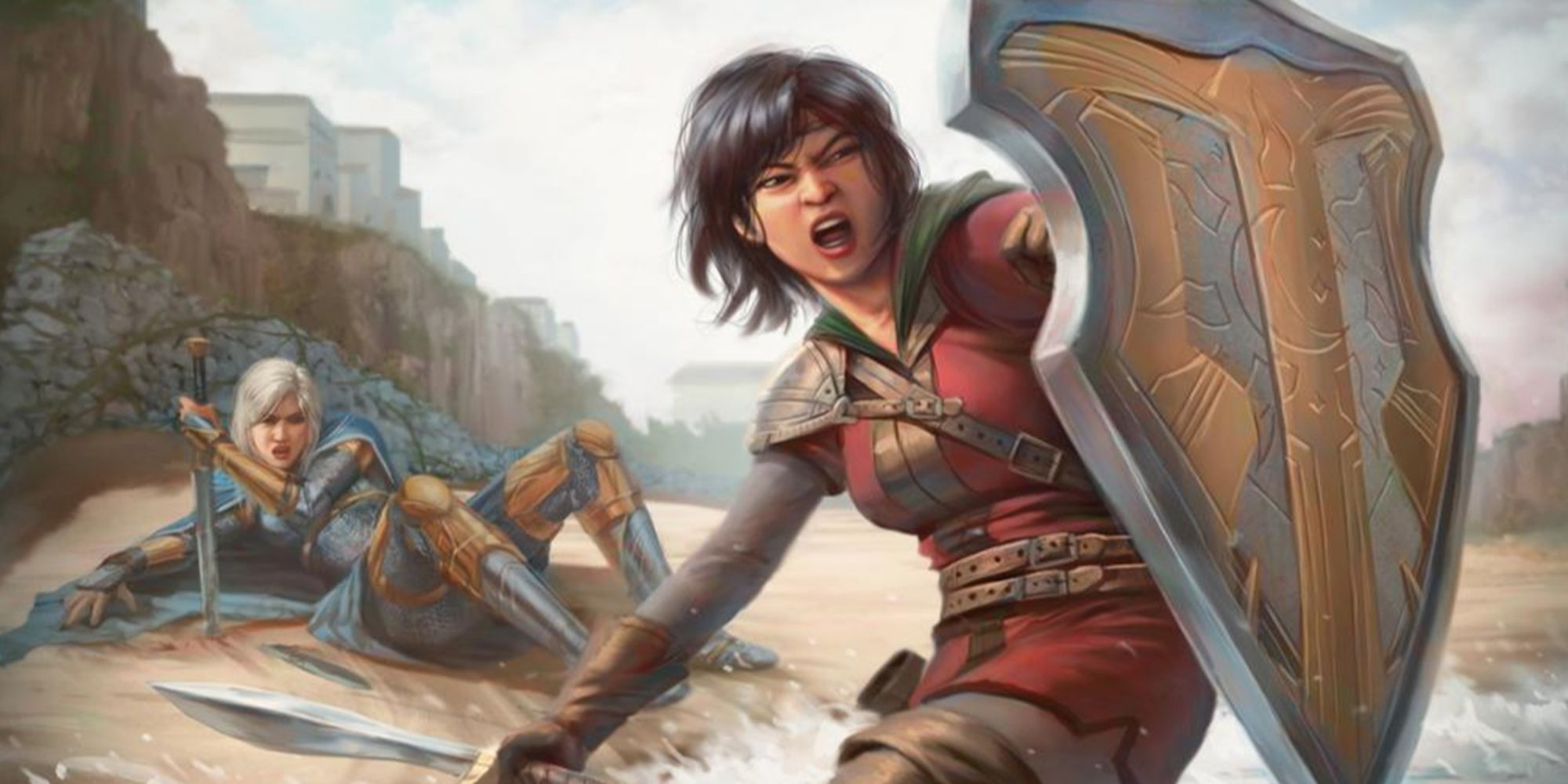There are several different species a player can choose from when creating a Dungeons & Dragons character, depending on what rules, modules, and expansions a Dungeon Master decides to use. According to the 5th edition of the Advanced Dungeons and Dragons Player's Handbook, the basic game has nine species a player can choose from when they roll a character.
When a player is relatively new to the game, the variety can be intimidating. Some new players might be looking for a challenge while others would prefer an easier route until they fully understand the game mechanics. Others might be familiar with role-playing games or tabletop games already and might be interested in a species somewhere in the middle to help them get used to the unique gameplay of D&D.
Updated on July 14th, 2023, by Kristy Ambrose: New modules and expansions intended for the D&D universe include different species that are specific to certain settings and environments. Modules like Mystic Oyddysies of Theros and Spelljammer have brought even more exciting and fun options into the mix, and that doesn't include all of the homebrew ideas that aren't included here. Just because these suggestions are ideal for novices to tabletop games or D&D, that doesn't mean that experienced players shouldn't give them a try.
18 Tiefling
A deeply compelling species with some rich lore, beginners should steer away from the Tiefling unless they have some role-playing muscles that need flexing. The Tiefling species has an infernal bloodline that gives them horns and creepy eyes, making them a distinct minority and social outcasts despite the Charisma bonus.
A lot of Warlocks and Sorcerers have Tiefling blood. Their beneficial racial traits include a bonus to intelligence and charisma, which are ideal for spellcasters, so don't let the challenge discourage you if you're a new player who feels ambitious.
17 Genasi
This is a shout-out to the characters drawn to the Evil side of the alignment spectrum. The Genasi is a sophisticated species found in the Elemental Evil Player's Companion, which is part of the Princes of the Apocolypse module.
They have mixed human and genie ancestry, which leads to some interesting backstory ideas.
Given that conflicted characters are more difficult to master, the Genasi would normally be reserved for a more experienced player. However, anyone interested in the lore of the Elemental Planes and specializing in a spellcasting class should try role-playing this species.
16 Dragonborn
Similar to the Tiefling, Dragonborn characters have an obvious and otherwordly ancestry that makes them difficult to overlook. On the plus side, they combine the best traits of both dragons and humans and have special abilities depending on what type of dragon was in their family.
It sounds like a complicated species, and that might be a problem for newer players. These complex characters often take their actions and motives to extremes, so be ready for some intense gameplay with this species regardless of class or moral alignment.
15 Fairy
If you're fortunate enough to experience the wonder of the Wild Beyond the Witchlight, then you can build a fairy character. This unique species is ideal for players of every experience level, with features that can help new adventurers and let more experienced ones spread their wings, so to speak.
Other than handy abilities like Fey Magic and Flight, Fairies have different features depending on their d8 roll during the character creation process. Roll a one, and you have wings like a bird instead of the typical butterfly-like wings.
Roll a seven, and you smell like freshly-baked brownies.
14 Harengon
Players are showing more interest in the Feywild as of late, hence the popularity of the module The Wild Beyond the Witchlight. This is where Harengon lives, and it's not the only D&D species with connections to that dangerous but compelling plane of existence.
As the name implies, the agile Harengon has bonuses when it comes to mobility, stealth, and other handy adventuring abilities.
Those aren't the only features that make the Harengon ideal for new players. Their connection to the Fey means they have extra spell resistance when it comes to charm or enchantment spells.
There's also a unique array players will appreciate when it comes to their ability scores. You can add +2 to one that you choose, and +1 to another, or add +1 to three of your choice.
13 Elf
They could be the most popular species among D&D players, in part thanks to racial bonuses like a higher Dexterity and abilities like Dark Vision. Several different kinds of Elves exist, depending on the module or the expansion, such as Drow, High Elves, or Moon Elves.
A player has to commit to some research before they roll an elf. It presents a lot of choices when it comes to lore and character building, which is why this species might be a better choice for a more experienced player.
On the other hand, a new player who's interested in lore and immersion would also enjoy playing an elf.
12 Gnome
Gnomes have several handy bonuses that make them ideal for newer players, especially those interested in spellcasting, stealth, or tinkering. Gnomes have a +2 to their intelligence scores, with Deep Gnomes and Rock Gnomes getting bonuses to Dexterity and Constitution.
The species also has some interesting lore that's deep and compelling without being pretentious or overwhelming. Rogues, Bards, and Artificers, common DPS classes which are easier to play than tanks or healers, are often Gnomes.
11 Tabaxi
A playable species found in Volo's Guide to Monsters, the Tabaxi have all of the bonuses and special abilities that players would expect in a species of cat people. When it's time to create a Tabaxi, they get a +2 to Dexterity and a +1 to Charisma, which is handy for a myriad of class builds and in-game situations.
Players that want a heavier, more "tanky" version of a Tabaxi should check out the Leonin. The name isn't just an expression.
This species inhabits the arid plains and deserts of the Mystic Odysseys of Theros adventuring module, and they are part-lion humanoids that have bonuses to Strength and Consitution.
10 Halfling
Halflings start with a definite advantage with their racial bonuses, which include an increase in their Dexterity and an ability known as Luck. A Dexterity bonus is handy for a variety of classes, and Luck is similar to a Cleric's Bless spell.
This allows a player to re-roll on a d20 for ability or attack.
If a player wants to be a Mage or Thief, they can be a Lightfoot Halfling. If they'd prefer a hardier character for a Ranger or Fighter class, then they can choose a Stout Halfling instead.
9 Warforged
This new species comes from the Eberron: Rising from the Last War supplement, and are essentially robots, making them a unique mix of class and species. The Warforged were built for combat, and are made of wood and metal, but they are sentient beings with emotions.
Once the wars they were built for have concluded, what do they do next?
This is a species with a myriad of possibilities for a player that wants to RP a species with a high Constitution and another bonus +1 stat of your choosing. They fall in the middle for someone who wants to build a fighting character with some interesting backstory but would prefer a lighter learning curve.
It's also the basis for a lot of Iron Man builds if you happen to be a Marvel fan.
8 Half-Orc
Newer players who don't want to roll a squishy character and are more concerned about basic survival, as opposed to role play, would prefer a half-orc. They retain the size of their Orcish ancestors and the intelligence of their human family tree.
Half-orcs can be from a rural clan or a crowded city slum and can live with humans or orcs.
Half-orcs get a bonus to their Strength and Constitution scores and often end up as Fighters, Rangers, or Barbarians. The lore of this species is compelling without being complicated, united by a bond under the god Gruumsh, with moral alignments leaning towards chaotic or evil.
7 Loxodon
Found in the Guildmaster's Guide to Ravnica, the Loxodon are known for their Wisdom and Constitution, stats that are a great start for several classes. Clerics, Druids, Rangers, and Barbarians focus on either one or both, so it's a great choice if you've never experienced the class or are new to the game.
In addition to the bonuses to some useful stats, the Loxodon also has several other innate abilities that are beneficial to any adventurer. Their trunk can be used as an extra appendage and is one of the reasons this species has Keen Smell, which gives them a bonus on Perception, Investigation, and Wisdom checks.
6 Revenant
What started as a homebrew species inspired by Unearthed Arcana, the Revenant is unique in the sense that it doesn't have to be a new character. This can be the risen husk of another character that did die and rose again.
It might be due to a gruesome or sudden death, or an important task left unfinished. For a player who is dealing with a character dying permanently, which can and does happen in D&D, this is one way to experiment with the various new Awakened Undead species.
A Revenant can have the same abilities as the species or class from which it arose, or the DM might decide to make some adjustments depending on the specific rules of the adventuring module. Either way, Revenants usually get Constitution bonuses and extra resistance against disease and frost damage.
Those are handy abilities for any player regardless of their experience level.
5 Centaur
If you're planning on building a character who lives travel, and wide-open spaces, and testing their battle prowess from both a melee and ranged perspective, a Canetaur is an ideal choice for a player of any level of experience. They're a playable species in Guildmaster's Guide to Ravnica and Mythic Odysseys of Theros.
The centaur species get a bonus to Strength and Wisdom, which applies to several classes, and have other abilities that make them ideal melee fighters, like using use their front hooves as close-ranged weapons and the advantage of Equine Build. They are Fey as opposed to Humanoid and can speak Sylvan in addition to Common.
4 Satyr
Players and Dungeon Masters can find the Satyr as a playable species in the Mythic Odysseys of Theros module, an ideal choice for those that like the ancient Greek aesthetic. This species is a bit less complex than other characters, with modest wants and loose morals that often lean towards Chaotic Good, an alignment favored by new players.
The species has a Charisma bonus and is ideal for Bards and other spellcasting classes, which overlaps nicely with the most popular classes for beginners.
3 Dwarf
The half-orc might be hardy but often lives a short and violent life with little culture or craftsmanship. A better alternative would be the Dwarf, an old and wise species with the ability scores to back it up, especially when it comes to Constitution.
Dwarves are big believers in keeping a strict social order and are often of a Lawful alignment but not necessarily a Good one. Paladins and Clerics often choose this species along with any class that needs a hardy physique, like a Ranger or a Barbarian.
2 Human
In any role-playing game that involves the Human species, they're always going to be the most popular. In D&D they start the game with the most bonuses, including a +1 to all of their abilities plus an additional language.
There is also a wide variety of ethnicities to choose from when it comes to Humans, so a player can customize virtually every aspect of a character. That includes the class, which can be anything within whatever D&D module, supplement, or rulebook you happen to be using.
1 Half-Elf
Players who are interested in dual or multi-class characters, which is pretty much everyone, gravitate towards the half-elf. They have the best qualities of both humans and elves, including some similar ability bonuses.
That means an extra +2 to Charisma and a +1 to two other attributes, along with the skills associated with Fey Ancestry, like resistance to magic. This makes them ideal as virtually any class, especially for characters leveling through more than one set of abilities.

